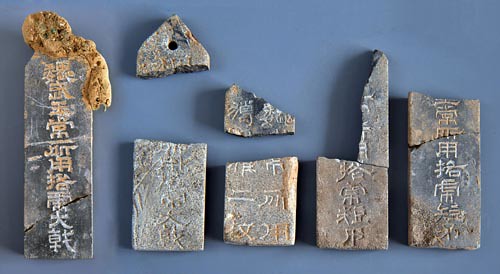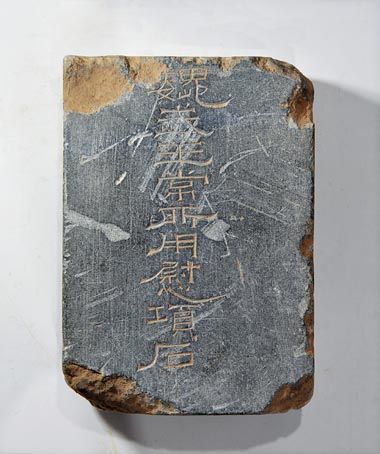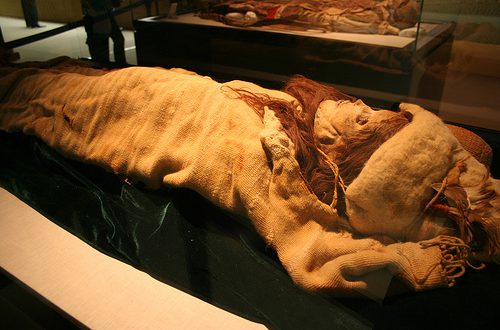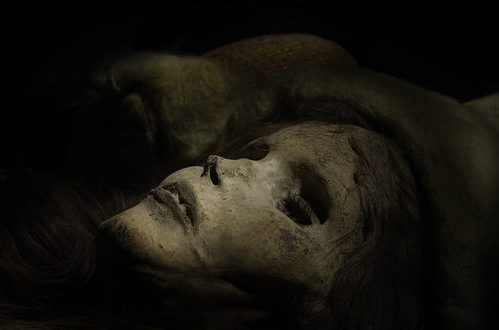 The recent discovery of Cao Caos tomb has sparked heated debates in the Chinese media over whether the find is genuine or not. The tomb, discovered in Chinas Henan province, is believed to belong to Cao Cao, a legendary Chinese warlord who lived about 1,800 years ago.
The recent discovery of Cao Caos tomb has sparked heated debates in the Chinese media over whether the find is genuine or not. The tomb, discovered in Chinas Henan province, is believed to belong to Cao Cao, a legendary Chinese warlord who lived about 1,800 years ago.
At the end of last year, Chinese archaeologists announced the find to the public. The strongest evidence they point to includes inscriptions on artifacts found at the site, as well as a recovered corpse whose time of death closely matches with when Cao Cao is recorded to have died.
Liu Qingzhu, a Chinese archaeologist with the countrys Institute of archaeology, said in a past interview with Heritage Key, Looking at all this evidence, one can say that the tomb has to belong to Cao Cao.
Renowned for his role in the Three Kingdoms period (184 to 280 AD), Cao Cao is a popular figure in Chinese culture, having been featured in books, TV shows and movies. News of the discovery became a hot topic in the country. But experts, as well as the country’s populace, were quick to express doubts about the find, causing a media uproar. Here are some of the concerns.
Questions About the Evidence
 Many of the inscriptions found on the artifacts at the site mention the King Wu of Wei. Archaeologists involved with the find believe this title refers to Cao Cao, who ruled over the Kingdom of Wei in the early 3rd century AD.
Many of the inscriptions found on the artifacts at the site mention the King Wu of Wei. Archaeologists involved with the find believe this title refers to Cao Cao, who ruled over the Kingdom of Wei in the early 3rd century AD.
The tomb, however, contains no mention of the name Cao Cao, which has left people questioning the find. Some scholars have argued against the archaeological evidence, saying the tomb does not match what was described in the historical records. Others are convinced Cao Caos tomb is located elsewhere such as in Bozhou, a city in Anhui Province, where the leader was born.
Fake Artifacts
One of the prominent skeptics has been Ma Weidu, a famous antique collector. Even though archaeologists spent close to a year excavating the tomb, Ma wrote in his blog and said in interviews that the artifacts used to prove the tombs connection to Cao Cao could have been created as replicas. He points out that archaeologists learned about the tomb after authorities apprehended looters, who had already robbed the site before.
While in the last decade the country has spent a great deal of effort in fighting the tomb raiding culture, many looters have stopped looting, and instead turned to creating fakes, which have tricked people looking for bargains and even experts, Ma wrote in his blog.
Ulterior Motives
Netizens in China have also suggested that the discovery may have been motivated by money. They cite how the local government in Henan province is already seeking to turn the tomb into a tourist attraction. Local news reports have mentioned that the tomb could raise a substantial income for the province.
Lack of DNA Testing
 To put the issue to rest, people have called for DNA tests to prove whether the corpse found in the tomb is in fact the deceased warlord. But experts have said, given the conditions of the recovered remains, it would be difficult to conduct a DNA test. At the same time, there is a doubt as to whether it would be possible to find a sample from someone who is descended from Cao Cao.
To put the issue to rest, people have called for DNA tests to prove whether the corpse found in the tomb is in fact the deceased warlord. But experts have said, given the conditions of the recovered remains, it would be difficult to conduct a DNA test. At the same time, there is a doubt as to whether it would be possible to find a sample from someone who is descended from Cao Cao.
An ongoing online poll at Sina.com, the countrys largest information portal, currently shows that about 60 percent of the poll takers do not believe the tomb belongs to Cao Cao.
One Chinese blog wrote of the controversy: “We can’t believe the experts, we can’t believe the media, we can’t believe the government. In this day and age, we don’t know what we can believe.”
Faced with the mounting skepticism, archaeologists tried to address the concerns this past week during seminars sponsored by Chinas Institute of Archaeology.
The biggest news to come forth was when Wang Wei, director of the institute, said to the media that the institiute could not say with absolute certainity that the tomb belonged to Cao Cao.
Wang said in local news reports, that while on a preliminary level the instititue believes that the tomb is Cao Cao’s, This is not our final conclusion. Currently we cannot declare it with total confirmation.”
Still, archaeologists involved with the discovery are continuing to make the case that tomb is the warlord’s final resting place. Some of the additional evidence includes the size and style of the tomb, which experts say adhere to the standards of that era. They also add that none of the artifacts excavated from the tomb show any evidence of being fabricated.
“The tomb belongs to Cao Cao,” Liu said in an interview with Heritage Key this week. “It’s not a matter of if we are 70 percent sure, or a 100 percent sure. It is Cao Cao’s tomb.”
The discovered tomb is 740 square meters in size and archaeologists believe its scale to be fit for a king. More than 250 artifacts, made up of gold, silver, jade, as well as stone tablets were found belonging to the tomb. Along with a male corpse that died at around the age of 60, archaeologists also uncovered the remains of two women in the tomb, one aged in her 50s, the other in her 20s at the time of death.
Liu said he believes part of the reason why skepticism about the discovery is so high is that many people rarely come in contact with archaeology and lack the knowledge about how the field operates. With Cao Cao being such a popular figure, people want to understand more, but are confused when they hear conflicting points of view, he said.
“This was just a small academic topic that’s suddenly become a major societal issue,” Liu added.
Archaeologists will continue their excavation work on the discovery. In the meantime, the institute recently named the Cao Cao find as one of their top discoveries in 2009.





